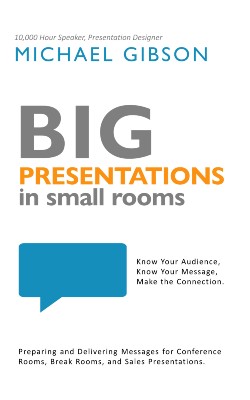Defining Congruence in Presentations
You have a hope, a presentation goal, and a plan to connect the audience to the content.
You know that there are things you can adapt so your content will appeal to various groups. You can adapt your facial expressions, your tone, and your words.
As you make these adaptations, there is an important concept to keep in mind.
Congruence.
Congruence involves agreement, harmony, and compatibility.
When making Big Presentations in Small Rooms, you want all elements of communication pulling in the same direction. You want congruence in presentations.
Congruence in Presentations is Like Tug-of-War
In an earlier blog we learned about adapting facial expressions, tone, and words. For this blog, let’s recognize that facial expressions belong to a larger category of body language. Congruent communication allows the audience to experience a strong pull in the same direction—all elements working together to lead them toward the goal.
Imagine you are in a game of tug-of-war. The opposition represents all of the things working against your message. Your team includes body language, tone, and words.
If the opposing team is all pulling straight back in the same direction, it has maximum power. If your team members (body language, tone, and words) are pulling in different directions, it will not have maximum power. And will be more likely to lose. Congruence offers your best chance of success.

Competitions Weaken Congruence in Presentations
If you do not have congruence, you must face another competition, a competition between body language, tone, and words.
In an often-misunderstand and misapplied body of research, Dr. Albert Mehrabian of UCLA focused on this competition (he was not focused on communications in general). He wanted to know which element would win! Imagine a three-way tug of war. Body language, tone, and words are pulling in different directions. Which one do we place our bets on?
What about you?
If words do not match body language, which do you believe?
If words do not match tone, which do you trust more?
If body language does not match tone, which do you go with?
Where would you place your bets?

Anti-Examples of Congruence in Communication
Let’s see what these would look like in the workplace.
Scenario 1:
As you arrive to set up for your big presentation, another group is dispersing from the meeting room. One employee looks at another and says with an angry glare “Oh. Great job. That was brilliant.”
If words do not match body language, which do you believe?
Scenario 2:
As you arrive to set up for your big presentation, a familiar co-worker is leaving the previous meeting.
“How did the meeting go?” you ask.
“Oh. It was fine.” She says with a quiet and trembling voice.
If words to not match tone, which do you trust more?
Scenario 3:
Following up on the previous interaction, you seek out another coworker who was in that meeting.
“How did the meeting go?” you ask.
“It was great. It went real well” He responds with a cheerful voice that doesn’t match the slump-shouldered posture and tearful eyes.
If body language does not match tone, which do you go with?
Who Wins the Competitions?
In Dr. Mehrabian’s research, he discovered that people weigh the competing elements as followed.
The words carry the least amount of weight. In times of discongruence, they account for 7% of the weight.
Tone is in second place with 38%.
Body Language is most powerful carrying the remaining 55%.
Did this match your intuitions?
Did you believe the body language (angry glare) over the words (Great job.)?
Did you go with the tone (quiet and trembling) over the words (Oh. Fine.)
Did you trust the body language (the posture and tears) over the tone (cheerful)?
Interesting!
And here is another powerful thought. The incongruence creates distractions from the message. When there is incongruence, the audience is forced to make additional decisions and combat additional distractions. The decisions and distractions further weaken the pull of the message.

Winning with Congruence in Presentations
We defined the winners when there is incongruence. But we must acknowledge a big potential loser: The Presenter.
Remember the tug of war?
Congruence in presentations means that your elements are all pulling in the same direction. You are maximizing the power of your words, tone, and body language so that they are in agreement. They sing in harmony. They are compatible. They are all working for you. They are pulling together to connect your audience to your content, to lead them toward the goal.
Want more articles, browse the blog!
Want to read more? Get the book!
Want to hear more? Check out the podcast!
Would you like to discuss coaching? Email Mike at mike@bigpresentations.com




